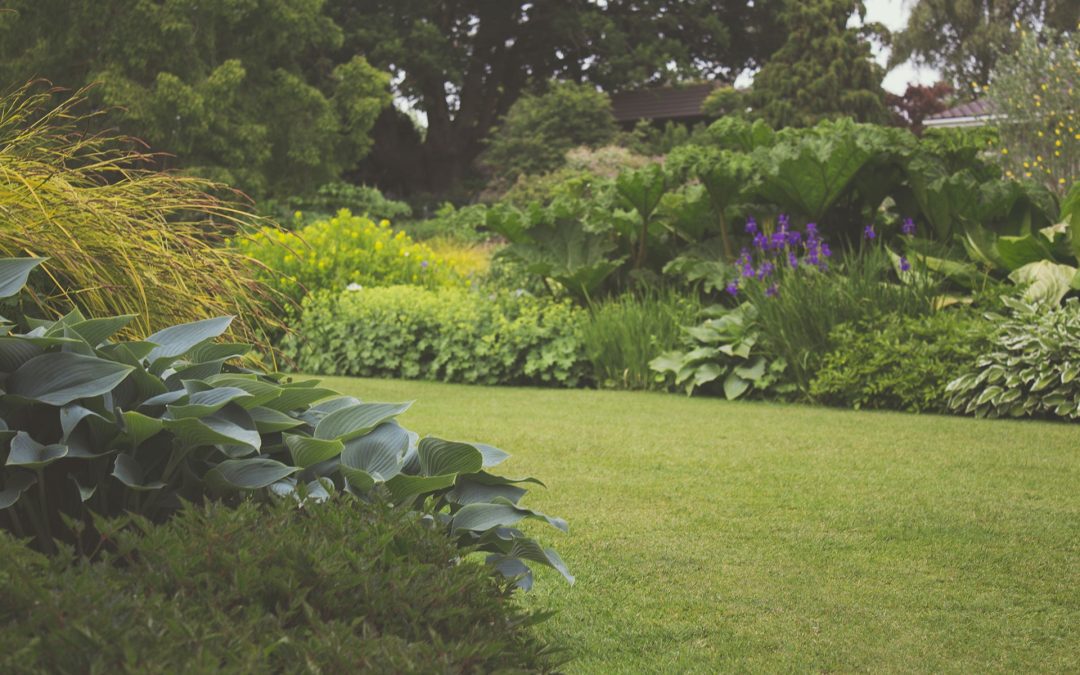Summer is the perfect time to enjoy your outdoor living space. But with the sweltering heat and humidity, keeping your lawn and garden in top condition can be a challenge. Here are some essential tips to ensure your landscape stays healthy and vibrant during summer.
Mow Consistently
Proper mowing is essential for maintaining a healthy and vibrant lawn during the summer months. The following are some tips for mowing your lawn correctly during the summer season:
Don’t Cut Too Short
One common mistake homeowners make when mowing their lawn is cutting the grass too short. This can damage the root system and cause it to become stressed, making it more susceptible to pests, diseases, and drought. During summer, it’s best to keep your grass at 2-3 inches to help retain moisture in the soil and protect the roots from the scorching sun.
Sharpen Your Blades
Dull mower blades can tear the grass blades instead of cutting them, leaving your lawn looking ragged and increasing the risk of disease. Sharpen your mower blades at least once a season to ensure a clean cut and a healthy lawn.
Avoid Mowing Wet Grass
Mowing wet grass can cause clumping and clogging of your mower deck, leading to uneven cuts and damage to your lawn. Wait until the grass is dry before mowing to ensure a clean and even cut.
Alternate Your Mowing Pattern
Mowing your lawn in the same direction every time can cause the grass to lean in one direction, making it more susceptible to damage and disease. Alternating your mowing pattern each time you mow can help prevent this and encourage upright growth.
Choose Native Plants
Choosing native plants for your summer landscape can have many benefits for the environment and your maintenance efforts. These plants are those that are native to a particular region or ecosystem, and they are adapted to the local climate, soil, and rainfall patterns. Here are some reasons why native plants are an excellent choice for summer landscape maintenance:
Lower Maintenance
Native plants are adapted to the local conditions and require less watering, fertilization, and pest control than non-native plants. This means they are easier to maintain and can save you time and money on upkeep.
Drought Tolerant
Many native plants are naturally drought-tolerant and can survive prolonged periods of hot and dry weather without supplemental watering. This can be especially important during the summer when water resources are limited.
Attract Pollinators
Native plants are an essential food source and habitat for pollinators such as bees, butterflies, and hummingbirds. By planting native plants in your summer landscape, you can help support local ecosystems and promote biodiversity.
Water Properly
Proper watering is one of the most important tasks for maintaining a healthy summer landscape. However, it can take some work to get it right. Here are some tips for watering your summer landscape properly:
Water Deeply and Infrequently
Instead of watering frequently, it’s better to water deeply and less often. This encourages profound root growth and helps the plants to become more drought tolerant. Most plants need about an inch weekly, so aim to water deeply enough to reach the roots.
Water in the Morning
Watering in the morning is the best time because the temperatures are cooler. This allows the water to soak into the soil before it evaporates. Watering in the evening can promote disease because the foliage remains damp overnight.
Use Drip Irrigation
Drip irrigation is a more efficient for watering your landscape because it delivers water directly to the root zone. This reduces evaporation and water waste and can also help prevent diseases by keeping the foliage dry.
Use the Right Fertilizers
Fertilizers help to provide essential nutrients to the plants, which can boost their growth, improve their resistance to disease and pests, and enhancing their color and overall appearance. Here are some tips for choosing and using the right fertilizers for your summer landscape:
Choose the Right Fertilizer
There are many different types of fertilizers on the market, each designed to provide different types and ratios of nutrients. For example, some fertilizers are high in nitrogen, which promotes leafy growth, while others are high in phosphorus, which is important for root development and flowering. Be sure to choose a fertilizer that is appropriate for the type of plants in your landscape.
Apply at the Right Time
It’s important to apply fertilizer at the right time for maximum effectiveness. Generally, it’s best to apply fertilizer in early spring or late fall when the plants are actively growing and can absorb the nutrients. However, you can also apply fertilizer in the summer, especially if your plants show signs of nutrient deficiency or stress.
Apply the Right Amount
Applying too much fertilizer can cause damage to your plants while applying too little can be ineffective. Follow the instructions on the fertilizer package carefully, and use a fertilizer spreader to ensure even distribution.
Maintaining a healthy and vibrant lawn and garden during the summer requires effort and knowledge, but the results are well worth it. Following these essential tips for summer landscape maintenance will help you enjoy a beautiful and thriving outdoor space all season long.
If you need any assistance keeping your landscape in top shape, don’t hesitate to contact Sarasota Landscaping Inc. Our team of experts can help you design, install, and maintain a stunning landscape that you’ll enjoy for years come. Get in touch with us now!

